Category: Archives
Friday, May 19, 2023
El Salvador’s brutally effective gang crackdown is creating a dangerous new model for aspiring autocrats
Francisco Toro in Persuasion:
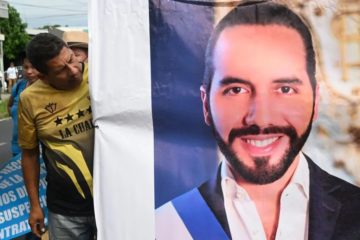 The most dangerous political experiment in Latin America is underway in El Salvador. A strange breed of populism is tipping the scale in the region’s age-old tug of war between authoritarianism and democracy. Rather than dividing the country, like populism usually does, it’s uniting it solidly behind a new consensus. More than anything, though, it’s succeeding, and doing so in the kind of impossible-to-miss way that turns heads up and down the hemisphere.
The most dangerous political experiment in Latin America is underway in El Salvador. A strange breed of populism is tipping the scale in the region’s age-old tug of war between authoritarianism and democracy. Rather than dividing the country, like populism usually does, it’s uniting it solidly behind a new consensus. More than anything, though, it’s succeeding, and doing so in the kind of impossible-to-miss way that turns heads up and down the hemisphere.
At the top of it all is the self-described “coolest dictator in the world,” the startlingly energetic Nayib Bukele. Having rounded up tens of thousands of suspected gang members in a series of police and military actions that don’t even pay lip service to due process of law, Bukele has become something of a national hero, with approval ratings now north of 90%. Under his watch, one of the most violent countries on earth has become considerably safer: a startling transformation that nearly all Salvadoreans seem profoundly grateful for.
More here.
Why colour is in the eye of the beholder
James Fox in The Guardian:
 For a long time, people believed that colours were objective, physical properties of objects or of the light that bounced off them. Even today, science teachers regale their students with stories about Isaac Newton and his prism experiment, telling them how different wavelengths of light produce the rainbow of hues around us.
For a long time, people believed that colours were objective, physical properties of objects or of the light that bounced off them. Even today, science teachers regale their students with stories about Isaac Newton and his prism experiment, telling them how different wavelengths of light produce the rainbow of hues around us.
But this theory isn’t really true. Different wavelengths of light do exist independently of us but they only become colours inside our bodies. Colour is ultimately a neurological process whereby photons are detected by light-sensitive cells in our eyes, transformed into electrical signals and sent to our brain, where, in a series of complex calculations, our visual cortex converts them into “colour”.
More here.
Jim VandeHei on how to write less but say more
These four challenges will shape the next farm bill – and how the US eats
Kathleen Merrigan in The Conversation:
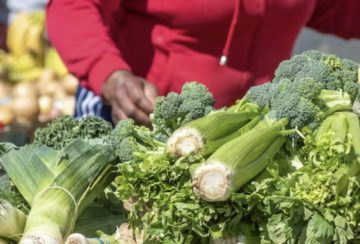 For the 20th time since 1933, Congress is writing a multiyear farm bill that will shape what kind of food U.S. farmers grow, how they raise it and how it gets to consumers. These measures are large, complex and expensive: The next farm bill is projected to cost taxpayers US$1.5 trillion over 10 years.
For the 20th time since 1933, Congress is writing a multiyear farm bill that will shape what kind of food U.S. farmers grow, how they raise it and how it gets to consumers. These measures are large, complex and expensive: The next farm bill is projected to cost taxpayers US$1.5 trillion over 10 years.
Modern farm bills address many things besides food, from rural broadband access to biofuels and even help for small towns to buy police cars. These measures bring out a dizzying range of interest groups with diverse agendas.
Umbrella organizations like the American Farm Bureau Federation and the National Farmers Union typically focus on farm subsidies and crop insurance. The National Sustainable Agriculture Coalition advocates for small farmers and ranchers. Industry-specific groups, such as cattlemen, fruit and vegetable growers and organic producers, all have their own interests.
More here.
Josh Tenenbaum: Scaling AI the Human Way
What Johnny Depp Has Become
Stephanie Zackarek in Time:
 The aging process is kind to no one, and that includes Johnny Depp.
The aging process is kind to no one, and that includes Johnny Depp.
On Tuesday, Depp was here in Cannes to walk the red carpet for the festival’s opening night film, Maïwenn’s misunderstood-mistress extravaganza Jeanne du Barry, in which Depp plays King Louis XV, whose devotion to his favorite extramarital squeeze brought scandal upon Versailles. When it was announced that a Depp film would be opening the festival, murmurs of “Sacre bleu!” were heard far beyond the kingdom, though perhaps not so much in France: the festival itself has opened its arms wide to Depp, who hasn’t exactly been untouched by controversy in the past few years, given his involvement in two high-profile defamation suits connected with allegations that he physically abused his former wife, Amber Heard. (The jury ruled that Heard defamed Depp on three counts and awarded him $15 million in damages; Depp was found guilty of one of three charges in Heard’s countersuit and she was awarded $2 million in compensatory damages.)
Friday Poem
On Visiting Central Park Zoo
The animals, hanging around in forms,
are each resigned to be what each one is,
imprisoned twice, in flesh first, then in irons.
The Bactrian camel is adjusted or is not
as, with his humps collapsed for lack of need
for water and with useless tufts of hair
like hummocks on the great plains of his flanks,
he stands around in shape and chews
a curd of solace, whether bitter, bland, or sweet,
who knows? Such is his formal pride,
his gargoyle’s face remains a stone
assertion as he pisses in between his splayed,
seemingly rachitic legs and stays
that way, in place, for want of something else
to do, caught in his double prison all the time.
Whatever he is, he goes on being what he is,
although ridiculous in forced review,
perseverant in not doing what he need not do.
by Alan Duggan
from New and Collected Poems
Ecco Press, New York, 1983
Unmixed Blessing: crops that can be propagated indefinitely, without sex
Erik Stokstad in Science:
 In early summer, unusual pollinators swoop over rice fields in Texas and Arkansas. Small, nimble helicopters fly low and steady so their rotors blow pollen from one row of plants to another. The flights help RiceTec, a plant breeding company, produce seed for high-yielding, robust varieties of rice grown across the southern United States. It’s an expensive and complicated way to create seed.
In early summer, unusual pollinators swoop over rice fields in Texas and Arkansas. Small, nimble helicopters fly low and steady so their rotors blow pollen from one row of plants to another. The flights help RiceTec, a plant breeding company, produce seed for high-yielding, robust varieties of rice grown across the southern United States. It’s an expensive and complicated way to create seed.
But the effort is worthwhile because the seeds sprout into plants with a mysterious robustness and resilience. The phenomenon, called hybrid vigor, comes from crossing two strains of inbred parents. Why hybrids are superior to normal plants is not clear, but one long-standing hypothesis is that favorable versions of genes from one parent dominate poor-performing, recessive genes from the other.
The development of hybrid varieties has boosted the yield of maize, sorghum, and other crops by up to 50% and has resulted in other valuable traits, such as better drought tolerance. But the method is only feasible in some species; there’s no practical way to produce hybrid wheat or soybeans, for example. And when it works, it’s extremely labor intensive.
More here.
On Chuck Berry
Ian Penman at Harper’s Magazine:
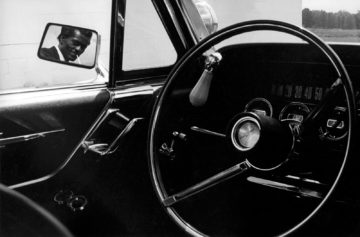 Berry never claimed that he invented rock and roll, and was always quite happy to point out where he’d gotten his inspiration: from the great hinterland and invisible college of rhythm and blues. He happily fessed up to his influences, such as Louis Jordan and T-Bone Walker. There was a lot of guilt-free recycling involved—transplanting a riff or a lick, a line or a trope, into fresh new settings. (Jordan’s guitarist Carl Hogan was the source for the famous opening guitar riff of “Johnny B. Goode.”) Even the execrable (but insanely popular) late hit “My Ding-A-Ling” was a virtual xerox of a roiling 1952 R & B side by the marvelous Dave Bartholomew. He tinkered, customized, and retooled songs as if giving an old car a new coat of paint, adding horsepower, then taking them back out on the open road again.
Berry never claimed that he invented rock and roll, and was always quite happy to point out where he’d gotten his inspiration: from the great hinterland and invisible college of rhythm and blues. He happily fessed up to his influences, such as Louis Jordan and T-Bone Walker. There was a lot of guilt-free recycling involved—transplanting a riff or a lick, a line or a trope, into fresh new settings. (Jordan’s guitarist Carl Hogan was the source for the famous opening guitar riff of “Johnny B. Goode.”) Even the execrable (but insanely popular) late hit “My Ding-A-Ling” was a virtual xerox of a roiling 1952 R & B side by the marvelous Dave Bartholomew. He tinkered, customized, and retooled songs as if giving an old car a new coat of paint, adding horsepower, then taking them back out on the open road again.
What he did do, indisputably, was visualize a whole new postwar landscape, and provide a soundtrack for its leisure time: a hybrid somewhere between white pop and black R & B. Smith has a lovely phrase for this: “Scraps and rags and things given away for free were pulled together and made into a brand new flag.”
more here.
Osip Mandelstam
Donald Rayfield at Literary Review:
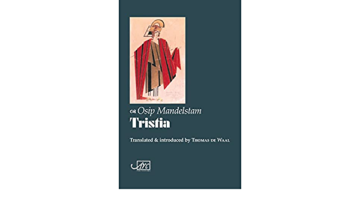 When in 1960 I first came across Osip Mandelstam’s poetry, nobody in the USSR had enjoyed access to his work since the early 1930s and few even knew of his existence, let alone of his death, as he had predicted, in Stalin’s Gulag. His books had been removed from libraries and bookshops. Only braver readers kept them, sometimes hidden in saucepans at their dachas. From 1958, supported by the CIA, émigré scholars collected what they could from Russian publications of the writings of banned Russian authors; the works were so in demand that students like myself copied them out by hand. Impressionable readers were stunned by the hypnotic musicality of Mandelstam’s early poems, by the penetrating appreciation of the disaster that unfolded – the ‘ship of time going to the bottom’ – during the First World War and the Russian Revolution, by the fine love poems and by the use of biology to elucidate his times.
When in 1960 I first came across Osip Mandelstam’s poetry, nobody in the USSR had enjoyed access to his work since the early 1930s and few even knew of his existence, let alone of his death, as he had predicted, in Stalin’s Gulag. His books had been removed from libraries and bookshops. Only braver readers kept them, sometimes hidden in saucepans at their dachas. From 1958, supported by the CIA, émigré scholars collected what they could from Russian publications of the writings of banned Russian authors; the works were so in demand that students like myself copied them out by hand. Impressionable readers were stunned by the hypnotic musicality of Mandelstam’s early poems, by the penetrating appreciation of the disaster that unfolded – the ‘ship of time going to the bottom’ – during the First World War and the Russian Revolution, by the fine love poems and by the use of biology to elucidate his times.
For a student of Russian literature, Mandelstam is a godsend. Every poem has memorable lines that could be quoted in many imaginable situations.
more here.
Thursday, May 18, 2023
CEO behind ChatGPT warns Congress AI could cause ‘harm to the world’
Cat Zakrzewski, Cristiano Lima and Will Oremus in the Washington Post:
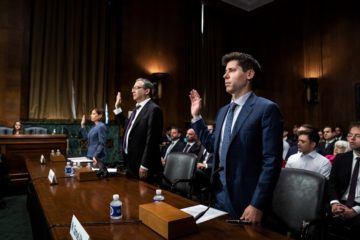 OpenAI chief executive Sam Altman delivered a sobering account of ways artificial intelligence could “cause significant harm to the world” during his first congressional testimony, expressing a willingness to work with nervous lawmakers to address the risks presented by his company’s ChatGPT and other AI tools.
OpenAI chief executive Sam Altman delivered a sobering account of ways artificial intelligence could “cause significant harm to the world” during his first congressional testimony, expressing a willingness to work with nervous lawmakers to address the risks presented by his company’s ChatGPT and other AI tools.
Altman advocated a number of regulations — including a new government agency charged with creating standards for the field — to address mounting concerns that generative AI could distort reality and create unprecedented safety hazards. The CEO tallied “risky” behaviors presented by technology like ChatGPT, including spreading “one-on-one interactive disinformation” and emotional manipulation. At one point he acknowledged AI could be used to target drone strikes.
More here.
Quantum physics proposes a new way to study biology – and the results could revolutionize our understanding of how life works
Clarice D. Aiello in The Conversation:
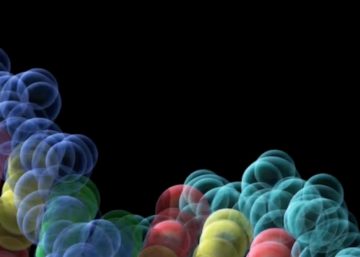 Imagine using your cellphone to control the activity of your own cells to treat injuries and disease. It sounds like something from the imagination of an overly optimistic science fiction writer. But this may one day be a possibility through the emerging field of quantum biology.
Imagine using your cellphone to control the activity of your own cells to treat injuries and disease. It sounds like something from the imagination of an overly optimistic science fiction writer. But this may one day be a possibility through the emerging field of quantum biology.
Over the past few decades, scientists have made incredible progress in understanding and manipulating biological systems at increasingly small scales, from protein folding to genetic engineering. And yet, the extent to which quantum effects influence living systems remains barely understood.
Quantum effects are phenomena that occur between atoms and molecules that can’t be explained by classical physics. It has been known for more than a century that the rules of classical mechanics, like Newton’s laws of motion, break down at atomic scales. Instead, tiny objects behave according to a different set of laws known as quantum mechanics.
More here.
Collective Guilt is the Most Indefensible Form of Cancel Culture
Yascha Mounk in Persuasion:
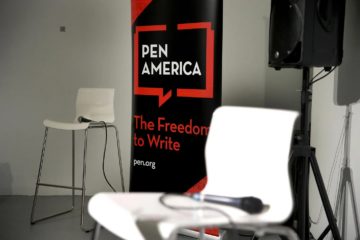 In January 1941, the world found itself in the darkest depths of World War II. Nazi Germany had conquered Poland and France. It remained allied with Japan and the Soviet Union, and now seemed on the verge of subduing the United Kingdom. The stakes were existential and the outlook increasingly bleak.
In January 1941, the world found itself in the darkest depths of World War II. Nazi Germany had conquered Poland and France. It remained allied with Japan and the Soviet Union, and now seemed on the verge of subduing the United Kingdom. The stakes were existential and the outlook increasingly bleak.
In the United States, Franklin D. Roosevelt was pushing for America to come to the rescue of civilization. Against strong domestic opposition he supported Britain with the Lend-Lease Act and was readying the American armed forces for a potential entry into the war.
It must at the time have been tempting to condemn all Germans for the actions of the Nazis, who had after all gained power in good part because of their strength at the ballot box. But rather than ascribing collective guilt to all Germans—as, shamefully, his administration was soon to do in the case of Japanese-Americans—F.D.R. recognized the distinction between Germans who supported and Germans who opposed the Nazis. He courted exiled dissidents and, at the beginning of that fateful year, went so far as to invite one of the most famous of them for an overnight stay at the White House.
More here.
A Lesson In Cognitive Dissonance
Kyle Dunn’s Night Fever
Jerry Saltz at New York Magazine:
 Ten paintings. Each engaging; each mysterious; each stranger than the next. Vivid color, erotic tension, mistrust, and atonement for what society has deemed are perverse games of sexual desecration. The figures in Kyle Dunn’s Night Pictures, now on display at P·P·O·W gallery, exist in suspended states of crisis, in the throes of jealousy and loneliness, withdrawn into shadow — burned out, exhausted, beautiful.
Ten paintings. Each engaging; each mysterious; each stranger than the next. Vivid color, erotic tension, mistrust, and atonement for what society has deemed are perverse games of sexual desecration. The figures in Kyle Dunn’s Night Pictures, now on display at P·P·O·W gallery, exist in suspended states of crisis, in the throes of jealousy and loneliness, withdrawn into shadow — burned out, exhausted, beautiful.
In Paper Angel, a naked male figure is crouching alone in a room, in front of a mirror, looking at a pile of books, food, and other paraphernalia. He personifies procrastination as a creative force. Is he the subject of an invisible painter, the painter himself, or an apparition for a painting? A paper cut-out of an angel adorns the wall, witness to a prayer of desire. The painting is also a superb topological map of open wounds. Here is a world without eros, no “other.” Just wistful longing.
more here.
Exaggerating The AI Disinfo Threat
James R. Ostrowski at The New Atlantis:
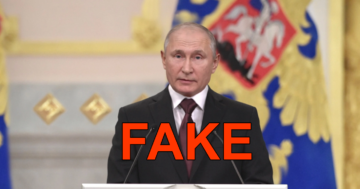 Any machine learning researcher will admit that there is a critical disconnect between what’s possible in the lab and what’s happening in the field. Take deepfakes. When the technology was first developed, public discourse was saturated with proclamations that it would slacken society’s grip on reality. A 2019 New York Times op-ed, indicative of the general sentiment of this time, was titled “Deepfakes Are Coming. We Can No Longer Believe What We See.” That same week, Politico sounded the alarm in its article “‘Nightmarish’: Lawmakers brace for swarm of 2020 deepfakes.” A Forbes article asked us to imagine a deepfake video of President Trump announcing a nuclear weapons launch against North Korea. These stories, like others in the genre, gloss over questions of practicality.
Any machine learning researcher will admit that there is a critical disconnect between what’s possible in the lab and what’s happening in the field. Take deepfakes. When the technology was first developed, public discourse was saturated with proclamations that it would slacken society’s grip on reality. A 2019 New York Times op-ed, indicative of the general sentiment of this time, was titled “Deepfakes Are Coming. We Can No Longer Believe What We See.” That same week, Politico sounded the alarm in its article “‘Nightmarish’: Lawmakers brace for swarm of 2020 deepfakes.” A Forbes article asked us to imagine a deepfake video of President Trump announcing a nuclear weapons launch against North Korea. These stories, like others in the genre, gloss over questions of practicality.
Chroniclers of disinformation often assume that because a tactic is hypothetically available to an attacker, the attacker is using it. But state-backed actors assigned to carry out influence operations face budgetary and time constraints like everyone else, and must maximize the influence they get for every dollar spent. Tim Hwang, a research fellow at the Center for Security and Emerging Technology, explains in a 2020 report that “propagandists are pragmatists.”
more here.
Enheduanna and Women of Mesopotamia ca. 3400-2000 BC
For the bullied, bullies, and bystanders: This mom has a plan
JJ Wahlberg in The Christian Science Monitor:
 When Shadi Pourkashef takes the stage at elementary school auditoriums, students know she’s there to talk about being kind, stopping bullying, and understanding others. So it might be surprising to them that she begins by asking what they think she does outside of her presentations.
When Shadi Pourkashef takes the stage at elementary school auditoriums, students know she’s there to talk about being kind, stopping bullying, and understanding others. So it might be surprising to them that she begins by asking what they think she does outside of her presentations.
The kids guess all kinds of things: “You’re a lawyer.” “You’re a teacher.” “You make drinks at Starbucks.” Then Ms. Pourkashef shows a photo of herself leading an orchestra and explains that she is a composer for movies and commercials, a piano teacher, and a conductor. The kids are amazed. “You couldn’t tell all that just by looking at me, could you?” she asks them.
And that’s the heart of the message that she brings from her Ability Awareness Project (AAP): You don’t know everything that someone is capable of just from a single observation or interaction. At her sunny studio here, her musical work is obvious. Two keyboards and a piano occupy three walls. She works via video chat with a student on piano finger placement. But her “other work” – combating bullying with kindness – happens beyond the studio walls throughout the community.
More here.
Med Men: How Big Pharma’s investment in the advertising model taught us to view health as another consumer choice
Ann Bauer in Tablet:
 In 2009, I took a job as a copywriter with an ad agency in Minneapolis. After 10 years of academia and publishing in obscure literary magazines, I began writing copy for health care and medical device accounts. The work was boring but the salary was grand, and so I threw myself into learning about stents and dilatation balloons.
In 2009, I took a job as a copywriter with an ad agency in Minneapolis. After 10 years of academia and publishing in obscure literary magazines, I began writing copy for health care and medical device accounts. The work was boring but the salary was grand, and so I threw myself into learning about stents and dilatation balloons.
About a year into the job a large meeting was called. Suddenly my colleagues—those of the running shoe and vodka accounts—wanted in. Our flagship health care client was looking for a multimedia retail campaign for their pacemaker. A pacemaker is a simple device that can be lifesaving, essentially a low-voltage clock used to speed up and regulate a slow or sloppy heart rate. It was developed in the late 1950s and patented in 1962. Since then, the technology has not changed much. The device got smaller and the surgery to insert it more streamlined, but as a mechanical object, the design was pretty perfect.
More here.
